As one embarks into the sphere of high-temperature work, the significance of heat-resistant gloves becomes increasingly apparent. The tools of the trade are not just about raw power or finesse; they are also about safety. While cutting-edge machinery and advanced skills are undeniably important, the hand that guides these machines - the human hand needs utmost protection.
In high-temperature work scenarios, this protection often comes in the form of heat-resistant gloves. These seemingly unassuming safety tools play an instrumental role in averting burns and preventing injuries, as well as ensuring smooth and uninterrupted workflows.
In this article, we'll dive deep into these heat-resistant guardians of the workforce. We'll walk you through what makes these gloves different from conventional gloves, understand the industry needs for such gloves, and explore the diverse materials and types available. Finally, we will touch upon the essential criteria for choosing the perfect heat-resistant gloves and discuss how to care for and maintain them.
Ready to get a hold of the bigger picture concerning heat-resistant gloves? Let's embark on this journey together!
Understanding High-Temperature Work
Have you ever wondered about the operations taking place in heat-intensive industries - like glass manufacturing, metalworks, or chemical processing? A significant aspect of these jobs involves what we term "high-temperature work." This kind of work requires a unique set of skills, reliable heat-resistant equipment, and an unprecedented level of precision for a job well done. Here, we're going to delve into what this type of work entails and why it's so crucial for specific industries.
Defining High-Temperature Work
High-temperature work can be understood as any task or process requiring operations at temperatures greater than that of typical room temperature. These temperatures often exceed 37.7°C (100°F), the maximum temperature most humans can withstand. To successfully accomplish these jobs, workers must be skilled, properly trained, and equipped with specialized heat-resistant clothing and equipment.
Below are a few key attributes that define high-temperature work:
- Extreme temperatures: This work is typically performed at temperatures much higher than standard room conditions.
- Detailed training: Employees require technical predictive know-how of high-temperature operations and safety processes to avoid accidents.
- Heat-resistant equipment: Work often involves the use of instruments that can withstand high temperatures, from simple tools to complex machinery.
But remember, "With great power comes great responsibility." And these high-temperature tasks carry the power, the risk, and the promise of creating products we all use daily.
Industries Needing High-Temperature Work
Now let's clarify which industries typically require high-temperature work. The answer might surprise you — it's not just factories and refineries, but a vast array of enterprises rely on such operations to function.
- Ceramic and Glass Industries: These industries employ high temperatures to melt and shape materials.
- Metal Manufacturing Industries: High heat is essential for processes like smelting, welding, and other heat treatments in these industries.
- Chemical Industries: Here, high temperatures play a crucial role in chemical reactions and distillation processes.
Through our exploration of high-temperature work, you can see its significant contribution to many industries. This discussion gives us a clearer understanding of the complexity, importance, and inherent risks associated with these operations. Yet, it’s thanks to these processes, we have access to abundant products—from the glass panes in our windows to the metal bodies of our vehicles.
This work is not for the faint-hearted. It demands courage, training, and above all, respect for the volatile nature of high temperatures. It shows us the beauty of human innovation and our ability to manipulate and utilize the elements of nature to our advantage.
Heat-Resistant Gloves: An Overview
With increasing demands in industries that involve high-temperature operations, worker safety has become vital. To this effect, the advent of heat-resistant gloves has been a blessing in disguise. More than just another protective wearable, these gloves have been a game-changer in industries ranging from catering to welding, and from glass manufacturing to firefighting. But what exactly makes these gloves so indispensable? Let's explore that in detail.
Defining Heat-Resistant Gloves
Heat-resistant gloves are personal protective equipment (PPE) designed to safeguard the hands from high temperatures and potential injuries like burns. These gloves are made from specialized materials that can withstand the heat without melting or catching fire. They offer not only high-temperature protection but also ensure flexibility, functionality, and comfort to the user. If your job involves dealing with high heat or open flames, heat-resistant gloves are a must-have safety tool.
Material Considerations for Heat-Resistant Gloves
The efficacy of a heat-resistant glove largely depends on its material composition. Some of the commonly used materials in heat-resistant gloves are:
- Leather: Known for its durability, leather offers effective insulation against heat, making it a popular choice for welding and other high-temperature jobs.
- ARAMID Fibres (Kevlar): Recognized for their excellent heat resistance and strength, ARAMID fibres also provide superior cut protection, making these gloves perfect for handling sharp objects in hot environments.
- Silicone: Silicone gloves are renowned for their water resistance and ability to withstand high heat, offering excellent protection in kitchen settings or where liquids are involved.
Types of Heat-Resistant Gloves
Heat-resistant gloves come in various types, each designed to cater to specific workplace environments. Some of these include:
- Welding Gloves: Made with thick, heat-resistant materials like leather, these gloves offer protection from sparks and hot metal fragments.
- Kitchen/Fireplace Gloves: Often made from silicone or treated fabric, these gloves protect against open flames and hot surfaces typically found in cooking or fireplace maintenance.
- Chemical-Resistant Gloves: Constructed with materials such as neoprene or nitrile, these gloves guard against chemicals and high heat, ideal for industrial chemical handling jobs.
Choosing the right heat-resistant gloves requires a clear understanding of your work environment and the potential hazards. A pair of gloves that offers maximum heat protection, dexterity, and comfort will ensure that you can perform your tasks smoothly while keeping your hands safe. Happy working!
The Role of Heat-Resistant Gloves in High-Temperature Work
Working in environments involving high-temperature tasks, from handling hot food in professional kitchens to metal fabrication in factories, can expose workers to increased risks of severe burns and injuries. In such weather, the importance of heat-resistant gloves can't be overstated. Let's explore some of these benefits in detail, from protection against accidents, enhancement of worker productivity, and realizing a consistent workflow devoid of delays caused by burn-related issues.
Protection from Burns and Injuries
The primary function of heat-resistant gloves is, as the name suggests, to defend against burns and injuries. High-quality gloves are specially designed with insulating materials and technologies to protect hands from extreme temperatures, whether it's heat from baking ovens or molten metal.
- Substantial barrier: They provide a substantial layer between your skin and the heat source, making it practically impossible for heat to permeate.
- Prevents contact burns: Direct contact with a heated surface can cause severe burns. Wearing heat-resistant gloves shields your hands and prevents contact burns.
- Provides protection from radiant heat: Aside from contact with hot objects, workers can also get injured from radiant heat. Heat-resistant gloves offer excellent protection against this.
Enhancement of Worker Productivity
When the risk of sustaining injury is significantly reduced, workers can fully concentrate on their tasks without fear. As a result, their output is likely to be higher quality and accomplished faster. With heat-resistant gloves:
- Comfortable handling of hot items: allowing workers to hold hot items comfortably for prolonged periods.
- Builds confidence: Employees tend to be more confident and efficient when they believe their safety is guaranteed.
- Lesser fatigue: These gloves are typically made from lightweight materials, meaning they don't cause fatigue even after hours of use.
Prevention of Work Interruptions
Whether in a fast-paced restaurant kitchen or a busy industrial plant, sustained workflow without abrupt interruptions is critical for productivity and meeting timelines. Here’s how heat-resistant gloves can help:
- Reduces injury-related downtime: Any incident involving a burn injury can sideline a worker, delaying their work, and disrupting operations.
- Minimizes worker's compensation claims: Fewer burn accidents mean fewer claims, reducing the legal and financial hassles.
- Safety compliance: Heat-resistant gloves are a key component of adhering to workplace safety regulations, helping businesses avoid fines and penalties.
Heat-resistant gloves are indispensible for high-temperature work environments. Beyond mere compliance with safety regulations, they offer substantial benefits that can considerably enhance overall productivity and workflow consistency. Companies should therefore make a priority of providing their employees with these gloves, ensuring a safer and more productive work environment.
Selection Criteria for Heat-Resistant Gloves
When it comes to ensuring safety in high-temperature work environments, selection of the right heat-resistant gloves is crucial. Protecting hands from extreme temperatures often involves navigating a complex amalgamation of potential hazards, from scalding surface types to unexpected temperature flares, each requiring an appropriately designed glove. That's why understanding the selection criteria for heat-resistant gloves is imperative for fostering safety in such workplaces.
Temperature Considerations
First and foremost, temperature is a deciding factor in choosing the proper gloves. A piece of glove that works wonderfully at 500°F might fail to provide enough protection at 800°F. Therefore, understanding temperature parameters of the workplace helps in selecting gloves with the correct heat resistance.
- Appointment with a heated surface: This refers to incidental or sustained contact with a hot object. Sustained contact necessitates gloves with higher heat resistance.
- Ambient temperature: For protection against radiant heat, you need gloves with a good insulating property.
Identifying these conditions and engaging in an in-depth conversation with the glove supplier can ensure a suitable glove selection for your specific needs.
Material Properties
The efficacy of heat-resistant gloves also depends on their construction material. Different materials have varied resistance to temperature and heat flux:
- Kevlar: Known for its excellent heat resistance and cut protection, Kevlar is ideal for handling sharp, hot objects.
- Silicone: Ideally protects from hot liquids and steam, thanks to its high insulating properties.
- Leather: Offers impressive resistivity against sparks and moderate heat — a perfect fit for welding jobs.
- Aramid fibers: For extremely high temperatures, aramid fibers like Nomex are your best bet.
Understanding the pros and cons of each material can assist in choosing the most effective gloves for your requirements.
Worker Comfort
Lastly, let's not forget one of the most critical factors: comfort. No amount of protection amounts to much if the gloves are uncomfortable to wear since discomfort can distract the wearer and lead to accidents. Therefore, going beyond mere material and temperature considerations is critical.
- Size: The gloves should neither be too loose nor too tight and should allow free movement of fingers.
- Dexterity: The gloves should not impede the worker's ability to grip objects securely.
- Breathability: The selected gloves should ideally allow sweat wicking and ventilation to prevent hands from getting too sweaty or hot.
As we've seen, the selection criteria for heat-resistant gloves is not a straightforward task, and it takes into consideration far more than just the obvious parameters. It requires a comprehensive understanding of the specific use scenario, temperature ranges, material properties, and worker comfort.
Understanding Standards for Heat-Resistant Gloves
When it comes to dealing with extreme temperatures or handling hot objects, having reliable protection is key. An often overlooked, but essential tool for this task, are heat-resistant gloves. But, not all gloves are the same. From material to durability and protection rating, there are many factors to consider - and the standards in place help guide those choices.
Regulatory Standards
The initial step in picking the right heat-resistant gloves is understanding the regulatory standards that govern this type of personal protective equipment (PPE). These regulations, established by bodies such as the Occupational Safety and Health Administration (OSHA), lay out essential safety requirements. For instance, OSHA's General Requirement section under Personal Protective Equipment (1910.138) stipulates a standard for hand protection.
- Gloves must be used whenever the tasks being performed presents a potential exposure to hazardous materials, heat, or cold.
- They should be chosen based on both the hazards identified and the performance of the gloves during testing.
- The employer is responsible for ensuring that the gloves used meet the required standards.
These regulatory standards not only provide a benchmark in terms of quality and safety but also act as a guidepost for both employers and employees in need of protective equipment.
Industry-Specific Standards
Aside from the general guidelines, heat-resistant gloves are subject to industry-specific standards. These tailored requirements stem from the unique challenges and safety risks present in different sectors. For instance, a welder would need a different type of heat-resistant glove compared to a baker or a glass-blower.
In the stringent world of aerospace, gloves have to meet a more specialized standard - the ASTM F1939 standard. This procedure measures the resistance of materials utilized in protective clothing to molten substance splash.
In the culinary industry, gloves need to be compliant with the Food and Drug Administration (FDA) regulations which state that the materials used in the gloves must be approved for contact with food.
By understanding the standards for heat-resistant gloves, you ensure not only compliance with the law, but more importantly, the safety and well-being of those using them. It's important to remember that while these standards exist as guides, always consider site-specific hazards and operations when selecting PPE. What works in one environment may not adequately protect in another. By respecting these limitations and understanding their implications, you can make an educated, safe, and protective choice.
Care and Maintenance of Heat-Resistant Gloves
Donning heat-resistant gloves is part and parcel of various laborious and high-risk job functions, safeguarding hands from excessive heat and possible burns. These gloves are built to resist intense heat, but they too need adequate care to maintain optimal functionality and longevity. Let's delve deeper into the steps you can take to ensure your gloves are cleaned, stored, and replaced correctly to handle the heat like a pro.
Cleaning of Heat-Resistant Gloves
Cleanliness is key to increasing the lifespan of your heat-resistant gloves, ensuring they function properly and remain hygienic for continual use.
- Light Cleaning: For minimal dirt or debris, a light dust-off would suffice. You can also wipe them down using a damp cloth, making sure all surfaces are covered.
- Deep Cleaning: For a more intense clean, consider hand washing your gloves with mild soap and warm water. Avoid using harsh chemicals or bleach as they can deteriorate the glove's heat-resistant properties.
- Drying: After washing, it's crucial to let the gloves air-dry. This allows for any moisture to evaporate, preventing bacteria build-up and ensuring the gloves maintain their integrity.
Remember, a properly cleaned glove not only improves performance but also fosters a healthier working environment.
Storage and Replacement of Heat-Resistant Gloves
An often-overlooked aspect of glove care is their storage. Proper storage can significantly enhance the life and performance of your gloves.
1. Storage
- Store heat-resistant gloves in a cool, dark place away from direct sunlight or any heat source.
- Always ensure your gloves are clean and completely dry before storing.
2. Replacement
Even with top-notch care, gloves do wear out over time. Therefore, it's essential to know when to replace them.
- Regularly inspect your gloves for any wear and tear. Visible damage, reduced flexibility, or decreased heat-resistance may be signs of old age, indicating it's time for a new pair.
Heat-resistant gloves play a pivotal role in protecting your hands from harsh work environments. With appropriate care and maintenance, you can extend their lifespan, ensuring your gloves always offer prime protection when you need them the most.
If you seek further insights into caring for safety gear, do read our blog on how to Maintain Your Safety Gear. But remember, the best maintenance practice is consistent care coupled with timely replacement whenever necessary.
Conclusion
As we wind up this comprehensive exploration of heat-resistant gloves, we essentially encapsulate that these protective gear are indeed indispensable for high-temperature work. They offer a security blanket for workers, aiding them in warding off serious burns and injuries, all while boosting their productivity. Plus, mindful deliberation while selecting these gloves can significantly augment their effectiveness.
However, in our pursuit to underscore workplace safety, we shouldn't limit ourselves to just high-temperature work. Every worksite comes with its own set of hazards. For instance, chainsaw operators also need superior protection to ensure their safety and productivity aren't compromised.
At our company, Rain Gear Pro, we deliver just this kind of commitment towards worker safety with our Canadian-made chainsaw safety pants. These pants, engineered with attention to detail and fine quality, prioritize longevity and comfort. Designed to tackle the notorious crotch blowout head-on, they're your first line of defense, appending optimal comfort to unparalleled protection.
In the final analysis, superior work gear, like heat-resistant gloves and other protective attire, significantly enhances worker safety and productivity. It's a worthy investment that pays off by reducing workplace accidents and fostering a conducive work environment.
Frequently Asked Questions
-
Why are heat-resistant gloves important for high-temperature work?
Heat-resistant gloves are important for high-temperature work because they provide protection against burns, injuries, and accidents. They act as a barrier between the hands and hot surfaces or objects, preventing heat transfer and potential harm.
-
What materials are heat-resistant gloves made of?
Heat-resistant gloves are typically made of materials such as Kevlar, Nomex, leather, aluminized fabrics, and certain synthetic fibers. These materials offer excellent thermal insulation and can withstand high temperatures without melting or catching fire.
-
What industries or occupations require the use of heat-resistant gloves?
Industries or occupations that involve high-temperature work environments, such as welding, foundries, glass manufacturing, automotive, construction, and firefighting, require the use of heat-resistant gloves to ensure the safety and well-being of workers.
-
What are some additional benefits of using heat-resistant gloves?
Aside from protecting against burns, heat-resistant gloves also provide dexterity, comfort, and grip. They allow workers to handle hot objects or perform tasks in extreme temperatures with greater precision and reduced hand fatigue.
-
How do I choose the right pair of heat-resistant gloves?
When selecting heat-resistant gloves, consider factors such as the temperature range they can handle, the specific hazards you may encounter, the level of dexterity required, the fit and comfort, and any additional features like cut or chemical resistance.



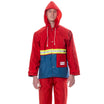
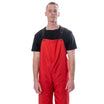
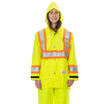
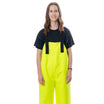
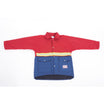
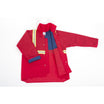
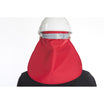
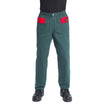
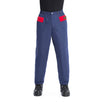
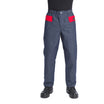
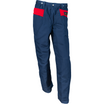
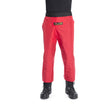
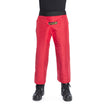
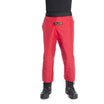
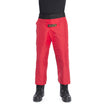
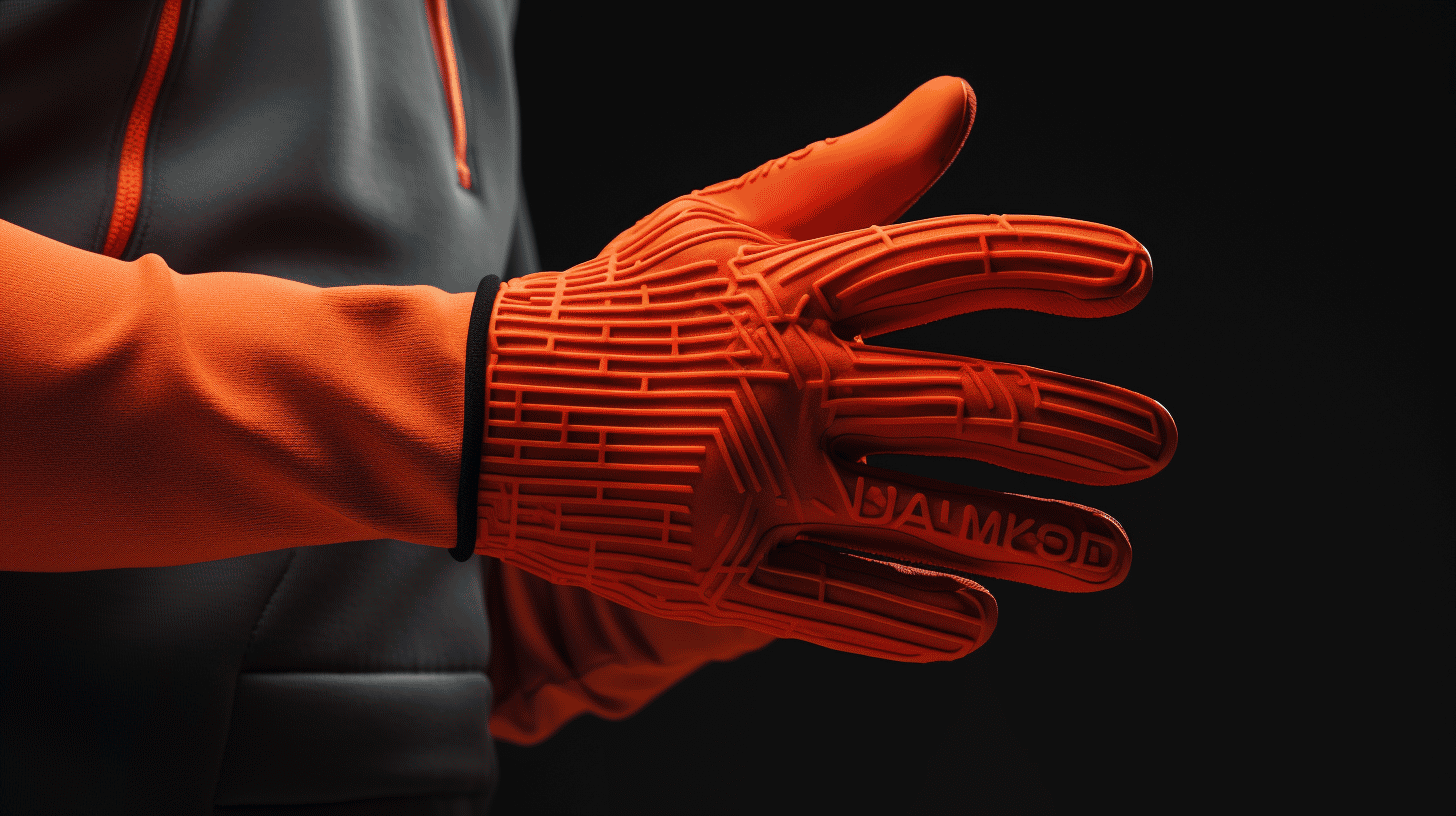


Leave a comment
This site is protected by hCaptcha and the hCaptcha Privacy Policy and Terms of Service apply.